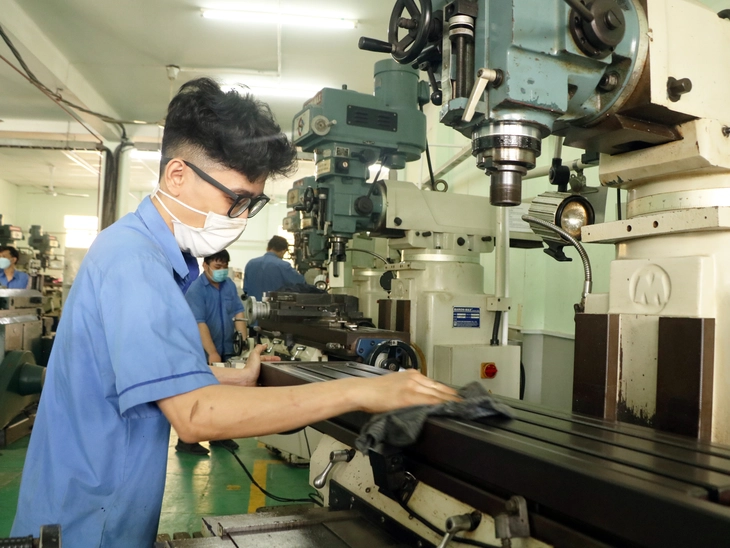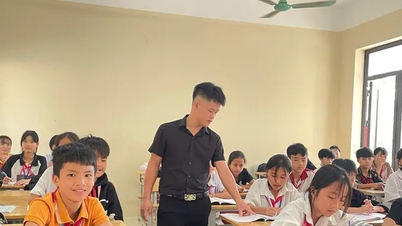
Students in a practice session at a college in Ho Chi Minh City - Photo: TRONG NHAN
This handbook is part of the overall strategy to implement major policies from the central to local levels on vocationaleducation development to 2030, with a vision to 2045.
Streaming Guide for Post-Secondary Students
The document is designed to support administrators, teachers, students and parents in understanding the vocational education system and choosing a learning path that suits their abilities and aspirations.
The content of the handbook includes core information to help students understand their options after middle school and high school, from intermediate and college programs to university transfer opportunities.
The handbook also explains learning models that combine academic and vocational training, along with occupational groups that are in high demand in the Ho Chi Minh City labor market.
In addition, the document also provides a detailed list of vocational training institutions in the city, along with enrollment targets, registration conditions, training time and admission methods.
Parents and students can also find frequently asked questions and answers to help ease their concerns when choosing a future direction.
Currently, the handbook is publicly announced on the electronic portal and sent to schools in the form of QR codes.
Secondary and high schools, as well as district and city education departments, are requested to proactively deploy enrollment information and disseminate this document to students and parents.
See the manual here.
New direction for vocational education in Ho Chi Minh City
Mr. Cao Minh Quy - Head of the Department of Continuing Education - Vocational and University, Ho Chi Minh City Department of Education and Training - said that the handbook will provide comprehensive and comprehensive information about the picture of vocational education in Ho Chi Minh City, introducing schools, majors and enrollment information.
This is a channel that helps students gain more knowledge to consider schools and majors for themselves, especially secondary school students, according to the right orientation.
On the other hand, according to him, colleges, intermediate schools, vocational training institutions... will also have an additional form of promotion, reaching more students.
According to statistics, Ho Chi Minh City has about 380 vocational training establishments in the area. Of which, there are 62 colleges, 60 secondary schools, 77 vocational training centers and 181 vocational training establishments.
According to the plan to implement the Ho Chi Minh City education development strategy from now until 2030, with a vision to 2045, the Ho Chi Minh City People's Committee aims to rapidly develop vocational education to meet the diverse needs of the labor market, the people and the increasing demand for quantity, structure and quality of skilled human resources for development.
By 2025, the city aims for at least 30% of vocational training institutions and 30% of training programs in key industries and occupations to meet quality accreditation standards.
At least 2 colleges and 5 training programs meet international accreditation standards; 4 high-quality schools; 3 schools reach the level of ASEAN-4 countries; 1 school reaches the level of developed countries in the G20 group; about 10 key industries and occupations have outstanding competitiveness in ASEAN countries...
Also according to the plan, Ho Chi Minh City aims to attract 40-45% of junior high and high school graduates to the vocational education system by 2025.
Source: https://tuoitre.vn/tp-hcm-phat-hanh-cam-nang-dinh-huong-giao-duc-nghe-nghiep-20250602184204198.htm





























































































Comment (0)